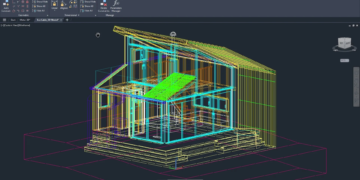As we approach 2025, enterprises are on the brink of a make-or-break moment. The rapid pace of technological change, driven by AI, cloud computing, and evolving customer demands, has elevated the software modernization strategy to a top priority in the boardroom.
According to Technology Magazine, the global enterprise software spending is projected to reach $1.25 trillion this year, a 14.2% jump from 2024. Meanwhile, the custom software development market is expected to grow at a 22.6% CAGR through 2030, as per Statista. These figures underscore a critical truth: clinging to legacy systems risks operational stagnation and competitive irrelevance.
For business leaders, modernization isn’t just about upgrading technology; it’s about securing a strategic edge. A robust software modernization strategy not only enables enterprises to innovate faster and reduce costs but also empowers them to meet rising customer expectations, a key to staying competitive in the market.
This article delves into why leading enterprises must prioritize modernization, highlighting its challenges, benefits, and real-world impact. By providing tangible examples, it aims to inform decision-makers and guide them toward transformative action.
The High Cost of Legacy Systems
Legacy systems, often dating back decades, are a growing liability. Built on outdated architectures, such as monolithic mainframes, they drain resources and expose enterprises to significant risks.
| Challenge | Impact | Example |
| Operational Inefficiencies | Slow systems and manual workarounds reduce productivity. | Delays in product launches are due to outdated infrastructure. |
| System Failures and Disruptions | Frequent breakdowns result in substantial financial losses. | A US retailer lost millions during a system outage at the peak of the season. |
| Security and Compliance Risks | Vulnerable to cyberattacks and non-compliance with regulations. | A healthcare provider faced fines after a data breach from outdated systems. |
These costs, financial, operational, and reputational, make modernization an urgent necessity. Enterprises relying on custom software development services can replace rigid systems with scalable, secure solutions tailored to their needs.
Competitive Pressures in a Digital-First World
In a digital-first world, businesses must adapt quickly to stay competitive. With modern cloud-native platforms and AI-driven automation, organizations can respond to market shifts instantly, meet rising customer expectations, and outpace agile competitors, leveraging cutting-edge technologies.
- Rapid Market Response: Modern systems, built on cloud-native platforms like AWS or Azure, enable real-time adaptability. Organizations with modernized architectures can deploy new features in days rather than months, respond instantly to market changes, and scale resources dynamically in response to demand fluctuations.
- Threat of Agile Competitors: Tech-forward startups and established rivals utilizing microservices, containerization, and AI-driven automation can pivot more quickly than legacy-bound organizations. These competitors can experiment with new business models, enter adjacent markets quickly, and iterate on customer feedback without the constraints of monolithic systems.
- Customer Expectations: Today’s consumers demand seamless, personalized experiences across all touchpoints. Modern platforms integrate AI, real-time analytics, and omnichannel capabilities to deliver tailored interactions. Organizations that cannot provide instant, contextual, and consistent experiences across web, mobile, and emerging channels risk customer defection to more agile competitors.
Without a software modernization strategy, enterprises struggle to keep pace, losing market share to those who prioritize digital excellence.
Unlocking Strategic Value Through Modernization
Modernization transforms enterprises by aligning technology with business goals, promising a host of benefits that can be unlocked:
- Accelerating Innovation: Modern platforms enable rapid development cycles. For instance, Appinventiv helped Adidas overhaul its e-commerce platform with AR integration, launching virtual try-ons in just six months, driving a 20% increase in online conversions.
- Data-Driven Decision Making: Modern systems utilize AI and big data to generate actionable insights. A healthcare client working with Appinventiv implemented a cloud-based analytics platform, improving patient outcomes by 15% through predictive diagnostics.
- Scalability and Adaptability: Cloud-native architectures and microservices allow businesses to scale effortlessly. AWS reports that 80% of containerized applications now use microservices, enabling firms to handle demand spikes without performance lags.
By investing in custom software development services, enterprises can build flexible, future-ready systems that drive growth and efficiency.
Talent and Organizational Impact
Modernization reshapes not just technology but also people and culture.
- Attracting Top Talent: Modern tech stacks, such as React, Node.js, or Kubernetes, appeal to skilled developers. A 2024 PwC survey found that 65% of tech talent prefer employers using cutting-edge tools, giving modernized enterprises a hiring edge.
- Reducing Legacy Skill Dependence: Maintaining systems like COBOL requires rare, expensive expertise. Modernization shifts focus to widely adopted languages, such as Python, lowering costs and risks.
- Fostering Agility: Modern workflows, such as DevOps, promote collaboration and continuous improvement, enabling organizations to stay ahead. Appinventiv’s DevOps adoption for a Middle Eastern retailer cut deployment times by 40%, fostering a culture of innovation.
These changes enable organizations to build resilient, forward-thinking teams that are aligned with their strategic goals.
Real-World Outcomes: Lessons from Industry Leaders
Successful modernization delivers measurable results. Here are key takeaways from enterprises that transformed with Appinventiv’s custom software development services:
- KFC: Modernized its global ordering platform with a cloud-native, AI-driven system. Result: 30% faster order processing and a 15% uplift in customer satisfaction across 25,000+ locations.
- IKEA: Migrated legacy inventory systems to a microservices-based platform, integrating IoT for real-time tracking. Result: 20% reduction in stockouts and $50 million in annual savings.
- 6th Street Retail: Adopted an API-first approach for its e-commerce platform, enabling seamless third-party integrations. Result: 25% faster time-to-market for new features and a 10% sales increase.
These cases highlight how modernization drives efficiency, cost savings, and customer-centric innovation. A 2024 BCG study confirms that companies prioritizing modernization achieve a 20–30% higher return on investment (ROI) on IT investments.
| Metric | Legacy Systems | Modernized Systems |
| Maintenance Cost | 80% of the IT budget | Reduced by 30–50% |
| Time-to-Market | Months to years | Weeks to months |
| Customer Satisfaction | Stagnant or declining | Up by 15–30% |
| Security Incidents | High vulnerability | Reduced by 40% with modern protocols |
The Risk of Inaction
Delaying modernization invites long-term consequences:
- Operational Stagnation: Legacy systems limit scalability, slowing growth. A 2024 Statista survey found that 55% of enterprises cite outdated technology as a barrier to expansion.
- Reputational Damage: System failures erode customer trust. A 2023 banking outage caused by legacy infrastructure led to a 12% drop in customer retention for a major US bank.
- Missed Opportunities: Deferring modernization means forgoing the benefits of AI, IoT, and blockchain innovations. McKinsey estimates that laggards could lose up to 20% of market share by 2030.
The potential losses from inaction are significant, far outweighing the investment in modernization. This underscores the essential nature of a software modernization strategy for survival.
Conclusion
In a world where technology drives competition, software modernization strategy is not a luxury; it’s a necessity. Legacy systems burden enterprises with inefficiencies, vulnerabilities, and missed opportunities. By embracing modernization, leaders can unlock innovation, agility, and scalability while meeting customer demands and attracting top talent. Partnering with leading software development companies like Appinventiv, which has proven expertise in custom software development services, empowers enterprises to navigate this transformation effectively, delivering a
The time to act is now. Proactive leadership and strategic investment in modernization will define tomorrow’s winners.













